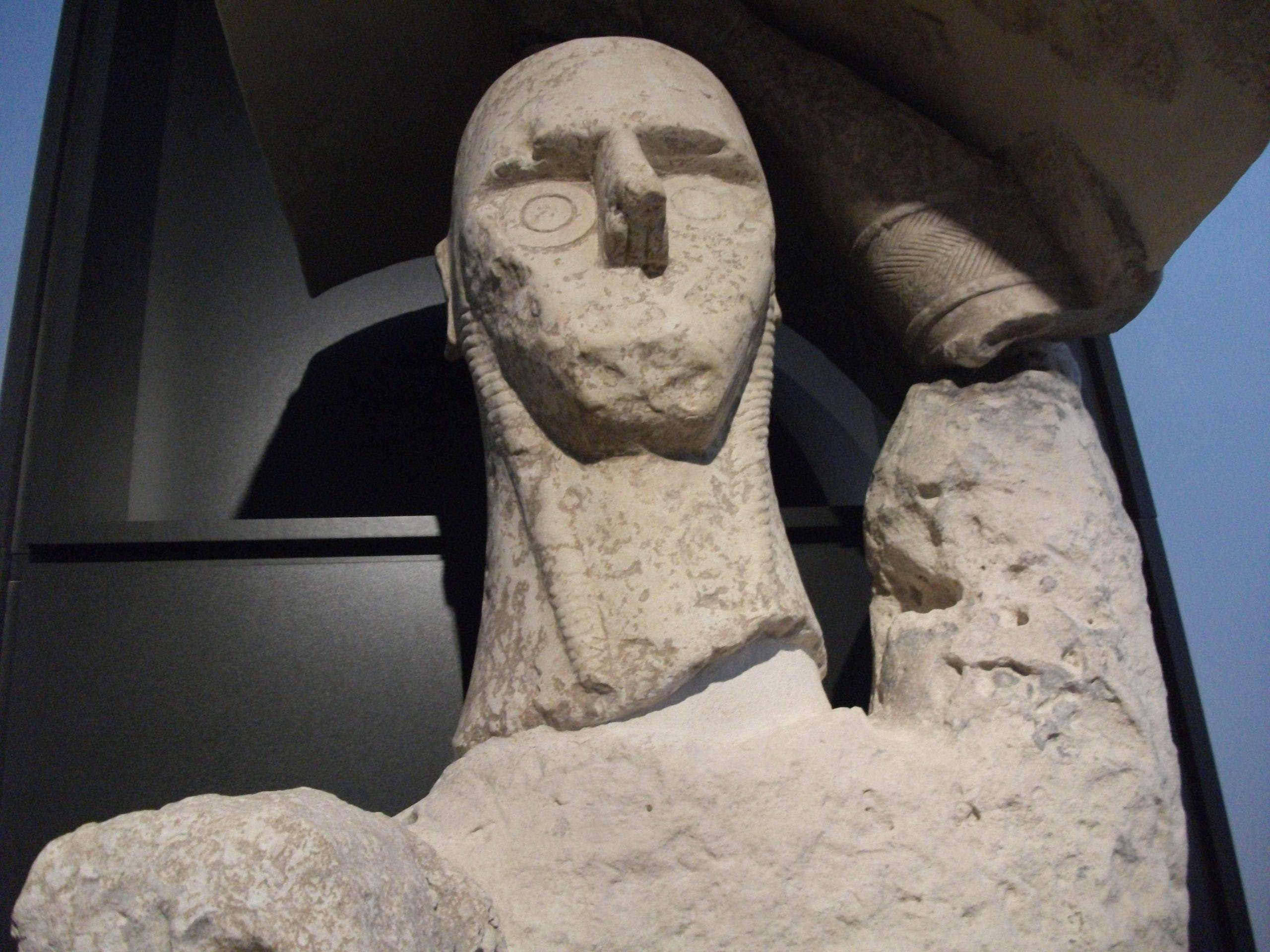The Giants of Mont’e Prama are a collection of impressive stone sculptures discovered in Sardinia, Italy. They date back to the Nuragic civilization, which thrived in the Bronze Age. These statues are unique in Mediterranean archaeology and represent one of the earliest examples of monumental sculpture in Europe. The figures, some standing over 2 meters tall, depict warriors, archers, and boxers, as well as models of nuraghes, the distinctive tower-like structures found throughout Sardinia. Their discovery has shed light on the art, religion, and society of the ancient Nuragic people.
Get your dose of History via Email
Historical Background of the Giants of Mont’e Prama
The Giants of Mont’e Prama were unearthed in 1974 near the village of Cabras, in the Sinis peninsula of Sardinia. A farmer stumbled upon fragments of the statues while plowing his field. Subsequent excavations revealed a necropolis with components scattered across a wide area. The site dates back to the Nuragic civilization, which existed from around 1800 to 238 BC. The Nuragic people are known for their peculiar nuraghes and for their advanced society.
The statues were likely created by the Nuragic people, but the exact purpose of these figures remains a mystery. Some scholars suggest they were part of a temple complex or a monumental burial site. The site did not seem to have been inhabited later, and there is no evidence that it was the scene of any historically significant events after the fall of the Nuragic civilization.
The discovery of the Giants of Mont’e Prama was a significant archaeological event. It provided a rare glimpse into the artistic capabilities and cultural expressions of the Nuragic civilization. The sculptures are unique in their size and complexity when compared to other artifacts from the same period in the Mediterranean region.
Since their discovery, the Giants of Mont’e Prama have undergone extensive restoration. The pieces of the statues were scattered and fragmented, posing a considerable challenge to archaeologists and restorers. The restoration process has allowed for the reconstruction of several of the figures, which are now displayed in museums in Sardinia.
The site of Mont’e Prama continues to be an area of active archaeological interest. Excavations and studies are ongoing, with new findings occasionally reported. These discoveries may provide further insights into the enigmatic Nuragic civilization and the purpose of these imposing stone figures.
About the Giants of Mont’e Prama
The Giants of Mont’e Prama are monumental stone sculptures that stand as a testament to the Nuragic civilization’s craftsmanship. They are carved from local sandstone and vary in height, with the tallest reaching over 2 meters. The figures are stylized, with elongated features and geometric patterns that suggest a sophisticated understanding of both art and aesthetics.
The sculptures depict various figures, including warriors with shields and swords, archers, and boxers wearing protective gloves. Additionally, there are models of nuraghes and betyls, which are stone megaliths associated with religious practices. The warriors wear horned helmets, and some figures are adorned with intricate carvings that may symbolize tattoos or body paint.
The construction of the Giants of Mont’e Prama would have required significant skill and labor. The sandstone used is susceptible to erosion, which suggests that the sculptures were originally painted or coated to protect them from the elements. The exact methods used to carve and transport these massive figures are still subjects of research and debate among archaeologists.
Architecturally, the site where the Giants were found does not exhibit the typical layout of a Nuragic settlement. Instead, it appears to have been a special location, possibly a necropolis or a sanctuary. The arrangement and orientation of the statues within the site could have held religious or ceremonial significance.
The preservation of the Giants of Mont’e Prama has been a priority since their discovery. The statues have been carefully restored and are considered among the most important archaeological finds in the Mediterranean. They offer a rare glimpse into the artistic and cultural world of the ancient Nuragic civilization.
Theories and Interpretations
Several theories have been proposed regarding the Giants of Mont’e Prama. Some scholars believe they were part of a ceremonial site or necropolis, serving as guardians for the deceased. Others suggest they could have been offerings to the gods or commemorations of victories in battle.
The mystery surrounding the Giants is compounded by the lack of written records from the Nuragic civilization. This has led to a reliance on interpretations of the sculptures themselves and comparisons with other archaeological findings from the same period. The figures’ iconography, such as the horned helmets and weapons, provides some clues to their possible significance.
There has been much debate over the dating of the Giants of Mont’e Prama. Radiocarbon dating and stratigraphic analysis have placed their creation around the 11th to 8th centuries BC. However, the exact timeline is still subject to research and discussion.
The site’s discovery has prompted comparisons with other ancient Mediterranean cultures. Some researchers have drawn parallels between the Giants and the statuary of ancient Egypt and Mycenaean Greece. These comparisons have fueled speculation about possible cultural exchanges or influences in the region during the Bronze Age.
Despite the ongoing research, many aspects of the Giants of Mont’e Prama remain enigmatic. The true purpose and meaning of these sculptures may never be fully understood. However, they continue to be a source of fascination and study, offering a window into the ancient world of the Nuragic people.
At a glance
- Country: Italy
- Civilization: Nuragic
- Age: 11th to 8th centuries BC
Conclusion and Sources
- Wikipedia – https://en.wikipedia.org/wiki/Giants_of_Monte_Prama
- Museo Archeologico Nazionale di Cagliari – http://www.museoarcheocagliari.beniculturali.it/

